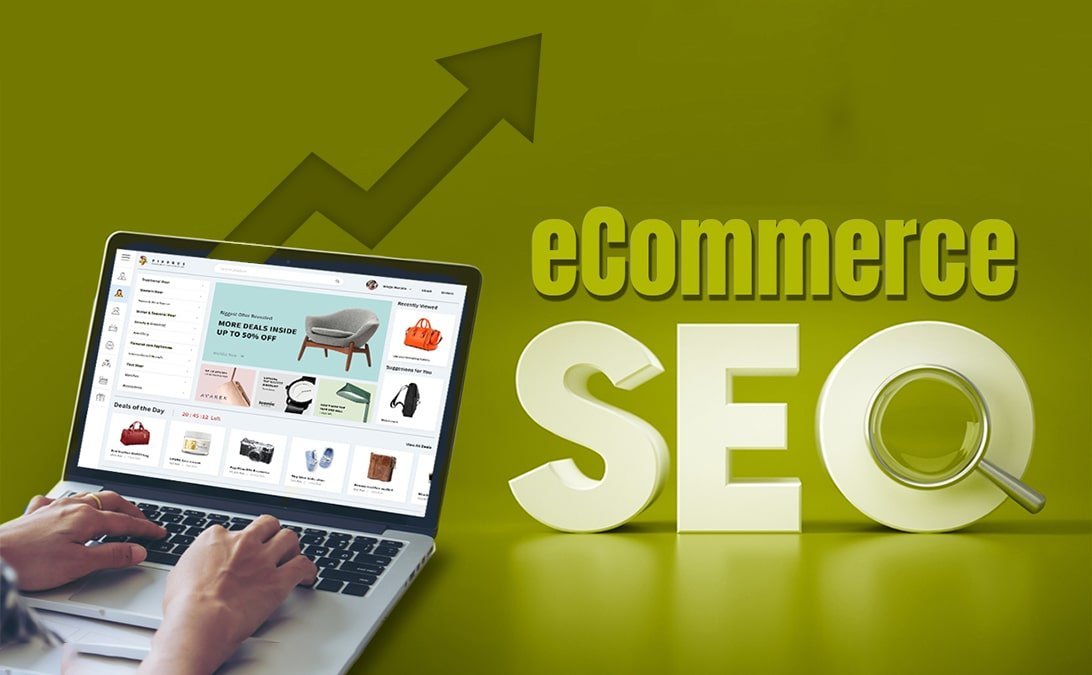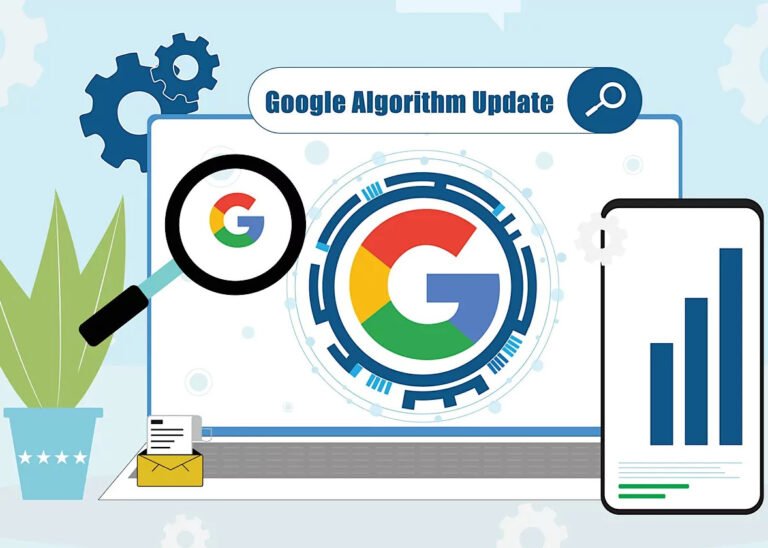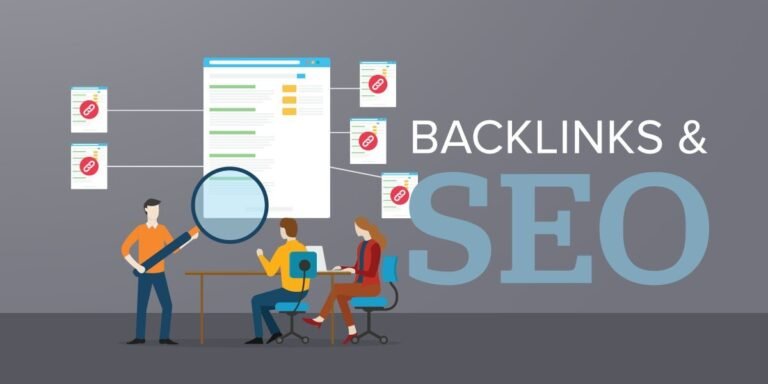Off-Page SEO for eCommerce – Boost Sales
In the bustling marketplace of eCommerce, getting noticed can feel like shouting into a void. Sure, you’ve perfected your product descriptions and nailed your site’s usability, but if you’re ignoring off-page SEO, you’re leaving money on the table. Off-page SEO is the secret sauce that can propel your online store from obscurity to the top of search engine results, driving traffic and significantly boosting your sales.
Why is off-page SEO so crucial for eCommerce? It’s all about building authority and trust. When search engines see that other reputable sites are linking to your store, they consider your site trustworthy and relevant, rewarding you with higher rankings. This isn’t just about backlinks, though. It’s about creating a comprehensive web of signals that tell search engines, “Hey, this site is valuable!”
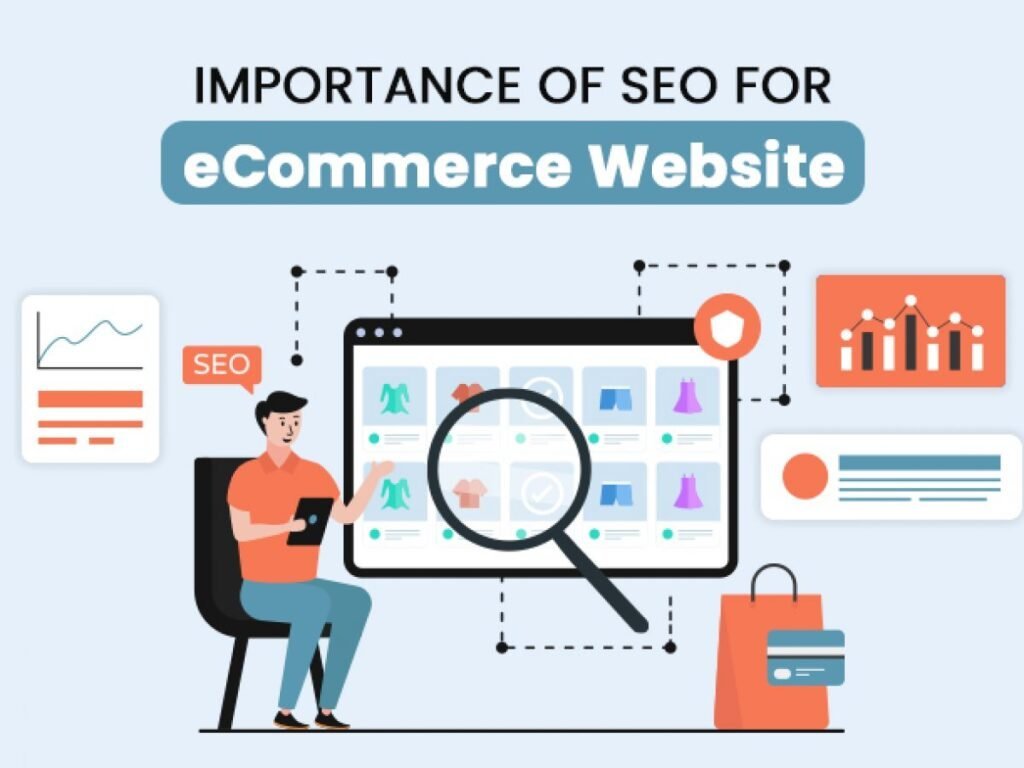
From high-quality backlinks to social media engagement, off-page SEO encompasses a range of strategies that, when executed correctly, can lead to an influx of visitors to your site. More traffic means more potential customers, which translates to more sales. Let’s delve into how you can harness the power of off-page SEO, guided by the principles of Semantic and Holistic SEO as advocated by experts like Koray Tuğberk GÜBÜR, to supercharge your eCommerce success.
Understanding Off-Page SEO for eCommerce
Off-page SEO refers to all the activities you undertake outside the boundaries of your website to improve its search engine rankings. While on-page SEO focuses on optimizing elements within your site like content and meta tags, off-page SEO involves strategies to boost your site’s authority and relevance from the outside. This includes acquiring high-quality backlinks, social media marketing, influencer outreach, and more.

For eCommerce websites, off-page SEO is particularly crucial. Here’s why:
- Building Authority and Trust: Search engines like Google prioritize websites that are seen as authoritative and trustworthy. When other reputable sites link to your eCommerce store, it signals to search engines that your site is credible, improving your rankings.
- Driving Targeted Traffic: Effective off-page SEO helps attract more visitors to your site. When high-quality sites link to your products or content, it not only boosts your search rankings but also directs targeted traffic to your store. These visitors are more likely to convert into customers, increasing your sales.
- Enhancing Brand Visibility: Engaging in off-page SEO activities, such as social media marketing and influencer collaborations, helps increase your brand’s visibility across different platforms. This multi-channel presence reinforces your brand and keeps it top of mind for potential customers.
- Competitive Edge: In the competitive eCommerce landscape, leveraging off-page SEO can give you a significant edge. By building a strong network of backlinks and social signals, you can outshine competitors who may be neglecting these crucial strategies.
Off-page SEO is not just about link building; it’s about creating a holistic strategy that encompasses various elements to enhance your site’s reputation and drive traffic. In the following sections, we’ll explore how to implement these strategies effectively, using the principles of Semantic and Holistic SEO to ensure comprehensive optimization.
Key Off-Page SEO Strategies for eCommerce
Implementing effective off-page SEO strategies can significantly enhance your eCommerce site’s performance and drive sales. Here are the key strategies you need to focus on:
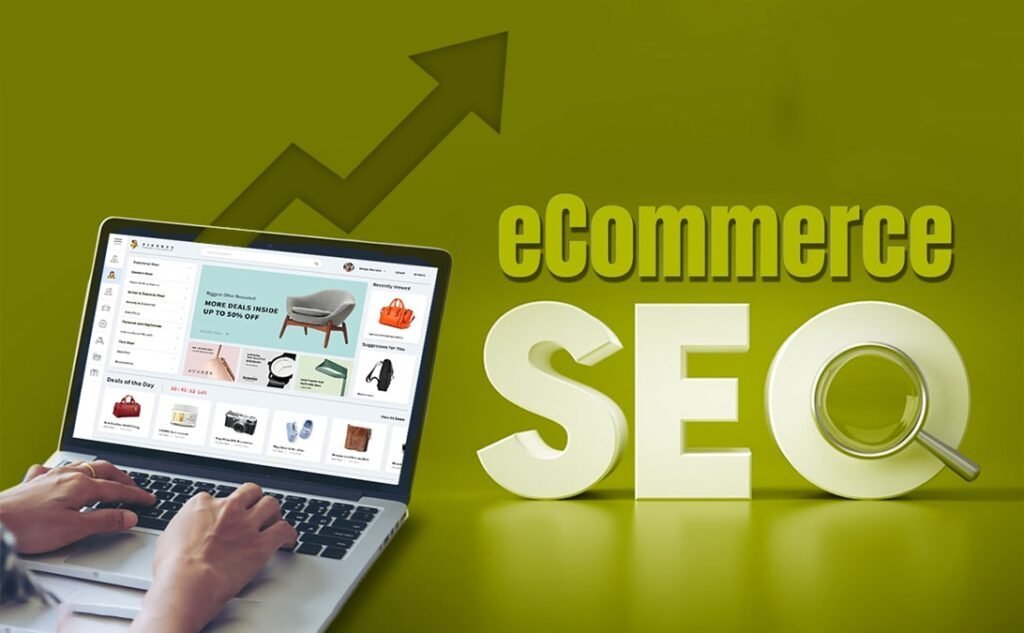
1. High-Quality Backlink Building: Backlinks remain a cornerstone of off-page SEO. Here’s how to get them right:
- Focus on Relevance: Aim for backlinks from websites that are relevant to your niche. A single link from a high-authority site within your industry can be more beneficial than multiple links from unrelated sites.
- Guest Posting: Write valuable, informative content for reputable blogs and websites in your industry. Include a link back to your eCommerce store to drive traffic and build authority.
- Broken Link Building: Find broken links on relevant websites and offer your content as a replacement. This is a win-win, as you help the site owner fix a broken link and gain a backlink in return.
- Influencer Outreach: Collaborate with influencers who can review your products or mention your brand. Their endorsement can drive traffic and provide valuable backlinks.
2. Social Media Marketing: Social media platforms are powerful tools for off-page SEO:
- Engage Your Audience: Regularly post engaging content on your social media profiles to keep your audience interested. Use a mix of product updates, behind-the-scenes content, and customer stories.
- Encourage Sharing: Create shareable content that your audience will want to share. This can include interesting blog posts, infographics, and videos related to your products or industry.
- Leverage Influencers: Partner with social media influencers to promote your products. Influencers have dedicated followings that trust their recommendations, which can drive traffic and sales.
3. Content Marketing: Creating high-quality content that others want to link to is crucial:
- Comprehensive Guides: Write in-depth guides and tutorials related to your products. These resources can attract backlinks from other sites that find your content valuable.
- Infographics and Visual Content: Visual content is highly shareable. Create infographics that simplify complex information related to your industry, and encourage others to share them.
- Interactive Content: Develop quizzes, calculators, or other interactive tools that provide value to your audience. These can attract links and shares, enhancing your off-page SEO efforts.
4. Online Community Engagement: Being active in relevant online communities can boost your off-page SEO:
- Forum Participation: Join forums related to your industry and contribute valuable insights. Include a link to your eCommerce store in your forum signature or where relevant.
- Q&A Sites: Answer questions on sites like Quora or Reddit. Provide detailed, helpful answers and include a link to your store when it adds value to the discussion.
- Industry Groups: Participate in industry-specific groups on LinkedIn or Facebook. Share your expertise and link back to your store when appropriate.
5. Local SEO and Citations: For eCommerce stores with a local component, local SEO is essential:
- Local Listings: Ensure your business is listed in local directories like Google My Business, Yelp, and other relevant local platforms.
- NAP Consistency: Maintain consistent Name, Address, and Phone number (NAP) information across all local listings and your website.
- Local Backlinks: Obtain backlinks from local businesses, news sites, and community blogs to boost your local SEO efforts.
6. PR and Brand Mentions: Public relations can play a big role in off-page SEO:
- Press Releases: Write and distribute press releases for significant events, product launches, or company milestones. This can attract media coverage and backlinks from news sites.
- Brand Mentions: Monitor mentions of your brand across the web. If you find unlinked mentions, reach out to the site owners and request a link back to your store.
- Influential Interviews: Participate in interviews with industry influencers or host your own interviews with experts. This can provide exposure and potential backlinks.
Building High-Quality Backlinks
Acquiring high-quality backlinks is crucial for improving your eCommerce site’s domain authority and search rankings. High-quality backlinks signal to search engines that your site is credible and valuable, leading to better visibility in search results. Here’s how to effectively build these backlinks:
Importance of Acquiring High-Quality Backlinks
- Boosting Domain Authority: Backlinks from reputable sites increase your domain authority, a key factor in search engine ranking algorithms. High domain authority means your site is more likely to rank higher for relevant keywords.
- Enhancing Search Rankings: Quality backlinks act as votes of confidence from other sites, telling search engines that your content is trustworthy and relevant. This can significantly improve your search engine rankings.
- Driving Targeted Traffic: Backlinks from relevant, high-traffic sites can direct a steady stream of targeted visitors to your store, increasing the likelihood of conversions and sales.
- Building Brand Credibility: When authoritative sites link to your content, it enhances your brand’s credibility and reputation within your industry.
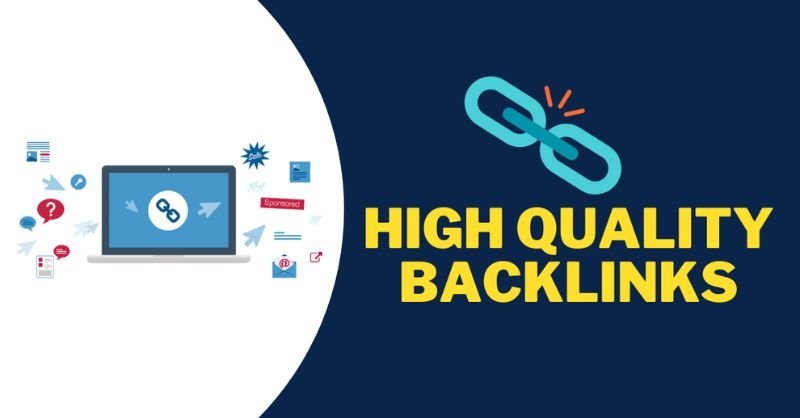
Outreach and Relationship Building
Effective outreach and relationship building are essential for acquiring high-quality backlinks. Here are some techniques to help you connect with industry influencers and bloggers:
Techniques for Effective Outreach
- Personalized Emails: Craft personalized emails when reaching out to influencers and bloggers. Mention specific content of theirs that you enjoyed and explain why your content or product would be valuable to their audience.
- Offer Value First: Provide value before asking for something in return. Share their content, comment on their posts, and build a genuine relationship. When you finally ask for a backlink or collaboration, they’ll be more receptive.
- Use Social Media: Engage with influencers on social media platforms. Share their posts, participate in discussions, and build a rapport before reaching out via email.
- Follow Up: Don’t be discouraged if you don’t get a response immediately. Follow up politely after a week or two to keep your request top of mind.

Guest Blogging
Guest blogging is a powerful strategy for building high-quality backlinks and establishing your authority in your niche. Here’s how to make the most of guest blogging:

Benefits of Guest Blogging
- Backlinks from Authoritative Sites: Guest blogging on high-authority sites earns you valuable backlinks that can boost your search rankings and domain authority.
- Exposure to a New Audience: Your guest posts will be seen by a new audience, driving targeted traffic to your site and increasing your brand’s visibility.
- Building Industry Relationships: Guest blogging helps you build relationships with other bloggers and influencers in your industry, leading to more collaboration opportunities.
Tips for Securing Guest Posts
- Research Potential Sites: Identify high-authority blogs and websites in your niche that accept guest posts. Look for sites with engaged audiences and strong domain authority.
- Pitch Relevant Topics: Tailor your pitch to the blog’s audience. Propose topics that are relevant and valuable to their readers, and explain why you’re the right person to write about them.
- Showcase Your Expertise: Include links to your best content and any previous guest posts you’ve written. Demonstrating your expertise increases your chances of getting accepted.
- Deliver High-Quality Content: When your pitch is accepted, provide well-researched, high-quality content that meets the blog’s guidelines and audience expectations. This not only ensures your post gets published but also opens the door for future guest posting opportunities.
Leveraging Social Media
Using social media platforms is a powerful way to boost your off-page SEO efforts and drive traffic to your eCommerce site. Social media signals, such as likes, shares, and comments, can indirectly influence your search engine rankings by increasing your content’s visibility and encouraging more backlinks. Here’s how to effectively leverage social media for off-page SEO:
Using Social Media Platforms
- Choose the Right Platforms: Focus on the social media platforms where your target audience spends most of their time. For eCommerce, visual platforms like Instagram and Pinterest are often effective, while Facebook and Twitter are great for broader reach and engagement.
- Optimize Your Profiles: Ensure your social media profiles are fully optimized with a clear description, profile picture, and links to your eCommerce site. This helps in building trust and driving traffic.
- Consistent Branding: Maintain consistent branding across all your social media platforms. Use the same logo, color scheme, and voice to create a cohesive brand identity that’s easily recognizable.


Creating Shareable Content
Creating content that is highly shareable and engaging on social media is key to increasing your reach and driving traffic to your eCommerce site. Here are some tips:
Tips for Creating Shareable Content
- Know Your Audience: Understand what your audience likes, shares, and engages with. Use this insight to create content that resonates with them.
- High-Quality Visuals: Use high-quality images and videos. Visual content is more likely to be shared than text-only posts. Invest in professional photography and graphic design to make your posts stand out.
- Compelling Headlines: Craft attention-grabbing headlines that pique curiosity and encourage clicks. Use power words and emotional triggers to make your content more appealing.
- Infographics and How-To Guides: Infographics and step-by-step guides are highly shareable. They provide valuable information in an easy-to-digest format, increasing the likelihood of shares.
- User-Generated Content: Encourage your customers to share photos and reviews of your products. User-generated content not only boosts credibility but also provides a steady stream of shareable content.
Social Media Engagement
Increasing engagement and followers on social media platforms requires consistent effort and strategic planning. Here are some strategies to boost engagement:
Strategies for Increasing Engagement
- Regular Posting: Maintain a consistent posting schedule to keep your audience engaged. Use social media management tools to plan and schedule your posts in advance.
- Interactive Content: Create interactive content such as polls, quizzes, and contests. These types of posts encourage participation and can significantly increase engagement.
- Respond Promptly: Engage with your followers by promptly responding to comments, messages, and mentions. Show appreciation for positive feedback and address any concerns or questions.
- Collaborate with Influencers: Partner with social media influencers who align with your brand. Influencers can introduce your products to a larger audience and boost your credibility.
- Live Videos and Stories: Use live videos and stories to give your audience a behind-the-scenes look at your business. This personal touch can foster a deeper connection with your followers.
- Hashtags and Trends: Use relevant hashtags to increase the visibility of your posts. Participate in trending topics and challenges to tap into larger conversations and reach new audiences.
Influencer Marketing
Engaging with influencers can be a game-changer for promoting your eCommerce products and improving your off-page SEO. Influencers have dedicated followings that trust their recommendations, which can drive traffic to your site and generate high-quality backlinks.
Identifying Relevant Influencers
Finding the right influencers is crucial for the success of your influencer marketing strategy. Here’s how to identify and approach influencers relevant to your niche:
- Research Tools and Platforms: Use influencer discovery tools like BuzzSumo, HypeAuditor, or Upfluence to find influencers in your industry. These platforms allow you to filter influencers by niche, follower count, engagement rate, and more.
- Check Their Audience: Ensure the influencer’s audience aligns with your target market. Analyze their followers’ demographics, interests, and engagement to confirm they’re a good fit for your brand.
- Review Their Content: Look at the influencer’s previous content to ensure it aligns with your brand values and aesthetic. Pay attention to the quality of their posts, the type of products they promote, and the engagement they receive.
- Engagement Over Follower Count: Prioritize influencers with high engagement rates over those with just a large follower count. An influencer with fewer but highly engaged followers can be more beneficial than one with a massive but passive audience.
- Micro-Influencers: Don’t overlook micro-influencers (those with 1,000 to 100,000 followers). They often have higher engagement rates and can be more approachable for partnerships.

Approaching Influencers

- Personalized Outreach: Craft personalized messages when reaching out to influencers. Mention specific content of theirs that you enjoyed and explain why your product would be valuable to their audience.
- Clear Proposal: Be clear about what you’re offering and what you expect in return. Whether it’s a product review, a giveaway, or a sponsored post, clarity ensures both parties are on the same page.
- Mutual Benefits: Highlight the mutual benefits of the collaboration. Explain how partnering with your brand can also bring value to the influencer’s audience and personal brand.
- Provide Value: Offer something valuable to the influencer, whether it’s free products, exclusive discounts, or monetary compensation. Showing that you value their work builds a positive foundation for the relationship.
Building Long-Term Relationships
Building and maintaining long-term relationships with influencers can provide ongoing benefits for your eCommerce store. Here’s how to do it:
Strategies for Building Long-Term Relationships
- Consistency and Communication: Maintain regular communication with influencers. Check in periodically, provide updates on your brand, and share new opportunities for collaboration.
- Exclusive Partnerships: Offer influencers exclusive partnerships or ambassador programs. This can make them feel more valued and committed to promoting your brand consistently.
- Celebrate Their Successes: Acknowledge and celebrate the influencer’s milestones and successes. Whether it’s congratulating them on reaching a follower milestone or celebrating a personal achievement, showing genuine interest in their success strengthens the relationship.
- Feedback and Collaboration: Encourage influencers to provide feedback on your products and collaborations. This not only shows that you value their input but also helps improve future campaigns.
- Involve Them in Product Development: Involve influencers in your product development process. This can include seeking their input on new products or inviting them to exclusive previews. It makes them feel like a valued part of your brand’s journey.
- Reward Loyalty: Offer rewards for long-term collaboration. This can include higher compensation, special gifts, or exclusive access to events and product launches.

Influencer marketing is a powerful tool for promoting your eCommerce products and improving off-page SEO. By identifying relevant influencers, approaching them effectively, and building long-term relationships, you can leverage their influence to drive traffic, generate high-quality backlinks, and ultimately boost your sales.
Content Marketing
Utilizing content marketing is an essential strategy to attract backlinks and drive traffic to your eCommerce site. By creating valuable and engaging content, you can establish your brand as an authority in your niche, encouraging other websites to link back to your site. Here’s how to effectively use content marketing for these purposes:

Creating Engaging Blog Posts
Creating blog posts that attract readers and generate backlinks involves more than just writing about your products. Here’s how to craft engaging content:
- Understand Your Audience: Know who your target audience is and what they care about. Conduct research to identify their pain points, interests, and questions. This will help you create content that resonates with them.
- Valuable and Informative Content: Provide valuable information that solves problems, answers questions, or offers insights. Comprehensive guides, how-tos, and in-depth articles are more likely to be shared and linked to.
- Catchy Headlines: Craft compelling headlines that grab attention and make readers want to click. Use power words, numbers, and questions to make your titles more enticing.
- High-Quality Writing: Ensure your blog posts are well-written, free of errors, and easy to read. Use subheadings, bullet points, and short paragraphs to make the content scannable.
- Include Original Research: Conduct and include original research, case studies, or unique insights in your posts. This type of content is highly shareable and often cited by other websites.
- Internal and External Linking: Use internal links to direct readers to other relevant content on your site. Also, link to reputable external sources to provide additional value and context. This can encourage reciprocal backlinks.
- Engage with Readers: Encourage readers to leave comments and engage with them by responding to their comments. Building a community around your blog can increase its visibility and credibility.
- Promote Your Content: Share your blog posts on social media, in newsletters, and through outreach to relevant influencers and websites. The more exposure your content gets, the more likely it is to attract backlinks.

Developing Infographics and Visuals
Visual content is highly engaging and shareable, making it an excellent tool for attracting shares and backlinks. Here’s how to create effective infographics and visuals:
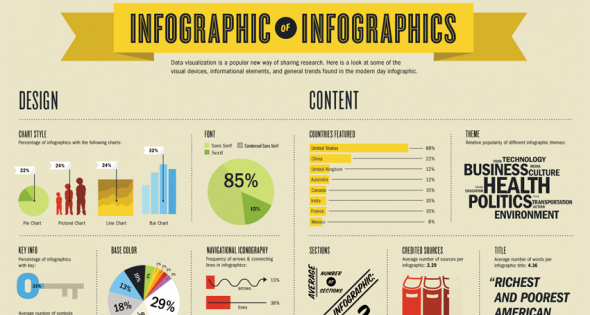
- Choose Relevant Topics: Select topics that are relevant to your audience and can be easily visualized. Infographics should provide valuable information in a visually appealing format.
- Simplify Complex Information: Use infographics to simplify complex data and concepts. Break down information into digestible chunks and use visuals to make it easy to understand.
- High-Quality Design: Invest in professional design to ensure your infographics look polished and professional. Use a consistent color scheme, clear fonts, and eye-catching visuals.
- Include Your Branding: Add your logo and website URL to the infographic to ensure it’s associated with your brand. This also helps drive traffic back to your site when the infographic is shared.
- Share and Promote: Share your infographics on social media, in blog posts, and through outreach to relevant websites and influencers. Encourage others to share and link back to your site.
- Interactive Content: Consider creating interactive infographics and visuals. Tools like interactive charts, maps, and calculators can engage users more deeply and increase the likelihood of shares and backlinks.
- Embed Codes: Provide an embed code for your infographics to make it easy for other websites to share them. This code should include a link back to your site, ensuring you get credit and a backlink whenever the infographic is used.
Content marketing through engaging blog posts and visually appealing infographics can significantly boost your off-page SEO efforts. By providing valuable, shareable content, you can attract high-quality backlinks, drive targeted traffic to your eCommerce site, and establish your brand as an authority in your niche.
Managing Online Reviews
Online reviews play a crucial role in eCommerce SEO and overall business success. They not only influence potential customers’ buying decisions but also impact search engine rankings. Here’s why managing online reviews is important and how to do it effectively:
Importance of Online Reviews for eCommerce SEO
- Enhanced Credibility and Trust: Positive reviews build trust and credibility, making potential customers more likely to purchase from your site. They serve as social proof, validating your products and services.
- Improved Local SEO: For businesses with a local component, online reviews are a key factor in local SEO rankings. Google My Business and other local directories use review scores as part of their ranking algorithms.
- Increased Click-Through Rates: Higher ratings and positive reviews can increase your site’s click-through rates (CTR) from search results. A high CTR signals to search engines that your listing is relevant and valuable, potentially boosting your rankings.
- Valuable Feedback: Reviews provide insights into what customers like or dislike about your products. This feedback can help you improve your offerings and address any issues.

Encouraging Customer Reviews
Getting more positive reviews requires a strategic approach. Here are some tips to encourage your customers to leave reviews:
- Ask for Reviews: Simply asking your customers to leave a review can be very effective. Send follow-up emails after a purchase, thanking them and requesting feedback.
- Make It Easy: Simplify the review process. Provide direct links to your review pages on platforms like Google, Yelp, or your website. The easier it is, the more likely customers are to leave a review.
- Incentivize Reviews: Offer incentives like discounts, coupons, or loyalty points in exchange for reviews. Ensure that you comply with the guidelines of review platforms, which typically prohibit incentivizing biased or fake reviews.
- Timing is Key: Ask for reviews when customers are most likely to be satisfied. For instance, shortly after they’ve received their order and had time to use the product.
- Leverage Social Media: Encourage reviews through your social media channels. Run campaigns highlighting the importance of reviews and how they help improve your services.
- Showcase Reviews: Highlight existing positive reviews on your website and marketing materials. When customers see that others are reviewing your products, they may be more inclined to do the same.
Responding to Reviews
How you respond to reviews, both positive and negative, is crucial for maintaining a positive brand image. Here are some best practices:
- Respond Promptly: Aim to respond to reviews as quickly as possible. Prompt responses show that you value customer feedback and are attentive to their concerns.
- Be Professional and Courteous: Always respond in a professional and courteous manner, regardless of the review’s tone. Thank customers for their feedback and avoid getting defensive or confrontational.
- Address Specific Points: When responding to negative reviews, address specific issues mentioned by the customer. This shows that you’ve read their review carefully and are taking their concerns seriously.
- Offer Solutions: If a customer has a complaint, offer a solution or explain the steps you’re taking to resolve the issue. This can help mitigate the negative impact and demonstrate your commitment to customer satisfaction.
- Thank Positive Reviewers: For positive reviews, express your gratitude. A simple thank you goes a long way in building customer loyalty.
- Encourage Further Engagement: Encourage satisfied customers to continue engaging with your brand. Invite them to follow your social media channels, join your loyalty program, or check out other products they might like.
- Use Reviews for Improvement: Take actionable insights from reviews to improve your products and services. Regularly analyze review feedback to identify common themes and areas for enhancement.
Effectively managing online reviews is a critical component of your eCommerce SEO strategy. Encouraging positive reviews and responding appropriately to all feedback can enhance your site’s credibility, improve SEO rankings, and drive more traffic and sales. By prioritizing customer feedback and demonstrating a commitment to quality, you can build a strong, positive reputation for your eCommerce brand.
Local SEO and Citations
Enhancing local SEO through citations and local business listings is crucial for boosting local eCommerce sales. Citations and local listings help search engines verify your business’s existence and relevance, making it easier for local customers to find you.
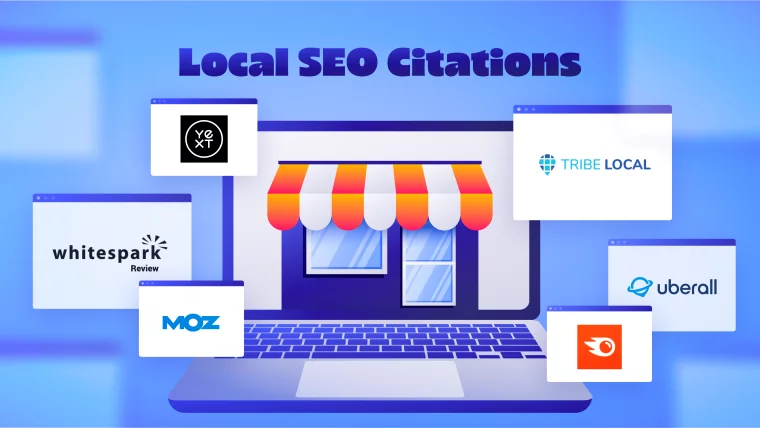
Local Business Directories
Listing your eCommerce business in local directories and citation sites is a fundamental aspect of local SEO. Here’s why it’s important and how to do it effectively:
Importance of Listing Your eCommerce Business in Local Directories
- Increased Visibility: Being listed in local directories increases your business’s visibility to potential customers searching for products or services in your area. This can drive more local traffic to your eCommerce site.
- Improved Local Search Rankings: Local citations (mentions of your business’s name, address, and phone number on other websites) are a key factor in local search algorithms. Consistent and accurate citations help improve your local search rankings.
- Enhanced Trust and Credibility: Listings in reputable local directories and citation sites build trust with both search engines and potential customers. They serve as verification of your business’s legitimacy.
- Referral Traffic: Many local directories have their own user base. Being listed can drive referral traffic to your eCommerce site from these directories.
How to List Your Business in Local Directories
- Choose Reputable Directories: Focus on listing your business in reputable and high-authority local directories such as Google My Business, Yelp, Bing Places, and industry-specific directories.
- Consistent NAP Information: Ensure your business name, address, and phone number (NAP) are consistent across all directories. Inconsistent information can confuse search engines and harm your local SEO.
- Complete Your Profiles: Fill out your business profiles completely. Include your website URL, business hours, a detailed description of your products/services, and high-quality images.
- Add Categories: Choose appropriate categories for your business to help search engines and customers understand what you offer.
- Monitor and Update: Regularly monitor your listings to ensure all information remains accurate and up-to-date. Update your listings whenever there are changes to your business details.
Managing Local Reviews
Local reviews are crucial for local SEO and building credibility. Here’s how to effectively manage them:
How to Manage Local Reviews to Boost Local SEO and Credibility
- Encourage Positive Reviews:
- Ask for Reviews: Request satisfied customers to leave reviews on platforms like Google My Business, Yelp, and Facebook.
- Follow-Up Emails: Send follow-up emails after a purchase, thanking customers and encouraging them to leave a review.
- Incentives: Offer incentives, like discounts or special offers, to customers who leave a review (ensure this complies with the review platform’s guidelines).
- Respond to Reviews:
- Prompt Responses: Respond to reviews promptly to show that you value customer feedback.
- Thank Positive Reviewers: Show appreciation for positive reviews to foster customer loyalty.
- Address Negative Reviews: Address negative reviews professionally and courteously. Apologize for any issues and offer solutions or compensation if appropriate.
- Monitor Review Sites:
- Regular Checks: Regularly check review sites for new reviews.
- Set Up Alerts: Use tools like Google Alerts to notify you of new reviews.
- Leverage Reviews in Marketing:
- Showcase Positive Reviews: Highlight positive reviews on your website and social media platforms.
- Testimonials: Use customer testimonials in your marketing materials to build trust and credibility.
- Improve Based on Feedback:
- Analyze Feedback: Regularly analyze review feedback to identify areas for improvement.
- Implement Changes: Make necessary changes to your products or services based on customer feedback.
Enhancing local SEO through citations and local business listings is vital for boosting local eCommerce sales. By listing your business in reputable local directories, ensuring consistent NAP information, and managing local reviews effectively, you can improve your local search rankings, build credibility, and drive more traffic to your eCommerce site.
Utilizing Forums and Communities
Engaging with online forums and communities is a powerful way to build backlinks and drive traffic to your eCommerce site. By participating in relevant discussions and sharing your expertise, you can establish your brand as an authority in your niche and attract a dedicated audience.

Participating in Relevant Discussions
Finding and participating in discussions relevant to your niche is the first step towards leveraging forums and communities for off-page SEO.
How to Find Relevant Discussions
- Identify Key Forums and Communities:
- Industry-Specific Forums: Look for forums dedicated to your industry. Websites like Reddit, Quora, and niche-specific forums are great places to start.
- Social Media Groups: Join relevant groups on platforms like Facebook, LinkedIn, and specialized communities like Slack or Discord channels.
- Competitor Analysis: Check where your competitors are active. This can give you an idea of which forums and communities are popular in your niche.
- Use Keywords to Search:
- Forum Search Functions: Use the search functions on forums and communities to find discussions related to your products or industry.
- Google Search: Use search operators like “forum” or “discussion” along with your keywords to find relevant forums (e.g., “eCommerce forum” or “beauty products discussion”).
- Set Up Alerts:
- Google Alerts: Set up Google Alerts for keywords related to your niche. This will notify you when new discussions on these topics arise.
- Forum Notifications: Subscribe to forums and enable notifications for topics of interest.
How to Participate Effectively
- Read the Rules: Before posting, familiarize yourself with the community guidelines. Each forum has its own set of rules, and adhering to them is crucial for building a positive reputation.
- Introduce Yourself: When joining a new community, introduce yourself and your business. This builds rapport and helps other members recognize you as a legitimate participant.
- Be Genuine and Helpful: Provide valuable insights and genuinely help others. Avoid overly promotional posts; instead, focus on adding value to the discussion.
- Stay Active: Regular participation is key. Consistently engage with discussions, answer questions, and provide updates to stay visible and build relationships.
Sharing Expertise
Sharing your expertise in online communities not only helps others but also establishes your authority and drives traffic to your eCommerce site.
Tips for Sharing Expertise
- Answer Questions: Look for questions related to your products or industry and provide detailed, helpful answers. This positions you as an expert and encourages people to visit your site for more information.
- Create Valuable Content:
- How-To Guides: Share step-by-step guides related to your products. For example, if you sell beauty products, post tutorials on skincare routines.
- Case Studies: Share case studies and success stories that highlight how your products have helped customers.
- Use Visuals:
- Infographics: Create and share infographics that provide valuable information in an easy-to-digest format.
- Videos: Share videos demonstrating your products or explaining complex concepts.
- Link Thoughtfully: When appropriate, include links to your blog posts, product pages, or other resources on your site. Ensure these links are relevant and add value to the discussion.
- Engage with Feedback: Respond to comments and feedback on your posts. This shows that you value community input and are willing to engage in meaningful conversations.
- Host AMAs (Ask Me Anything): Offer to host AMA sessions in relevant forums. This allows community members to ask questions directly and can significantly boost your visibility and credibility.
Measuring the Success of Off-Page SEO
To ensure your off-page SEO efforts are effective, it’s essential to measure their success using various tools and metrics. This will help you understand what’s working, what needs improvement, and how to optimize your strategy for better results.
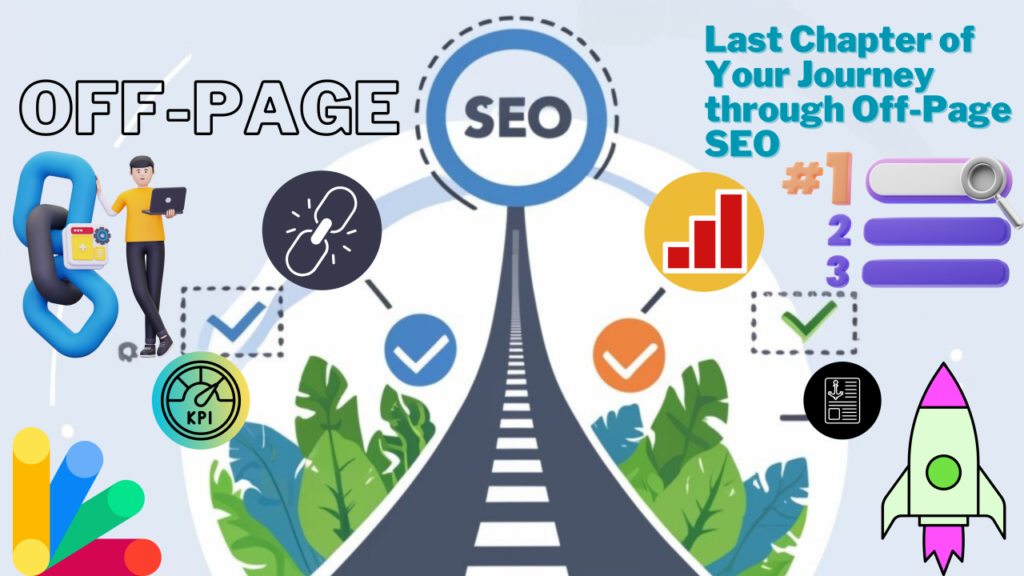
Tools for Measuring Off-Page SEO
- Google Analytics:
- Traffic Sources: Google Analytics provides detailed insights into where your traffic is coming from. You can track referral traffic from backlinks and social media.
- User Behavior: Understand how users interact with your site once they arrive. Metrics like bounce rate, average session duration, and pages per session can indicate the quality of traffic driven by off-page SEO.
- Google Search Console:
- Backlink Profile: Monitor your backlink profile, including the total number of backlinks and referring domains.
- Search Performance: Track how your site is performing in search results. Look at metrics like clicks, impressions, average position, and click-through rate (CTR).
- Ahrefs:
- Backlink Analysis: Ahrefs provides a comprehensive analysis of your backlink profile, including new and lost backlinks, referring domains, and anchor text distribution.
- Content Explorer: Identify high-performing content in your niche and understand which pieces attract the most backlinks.
- SEMrush:
- Backlink Audit: SEMrush offers tools to audit your backlink profile, identify toxic links, and understand the overall health of your backlink strategy.
- Brand Monitoring: Track mentions of your brand across the web to see how your off-page SEO efforts are improving brand visibility.
- Moz Link Explorer:
- Domain Authority: Moz’s Domain Authority metric helps you gauge the overall strength of your site’s backlink profile.
- Spam Score: Identify and address potentially harmful backlinks that could negatively impact your SEO.
- BuzzSumo:
- Content Performance: Analyze how your content is performing on social media and which pieces are attracting the most engagement and shares.
- Influencer Identification: Identify key influencers who can help boost your off-page SEO efforts through shares and backlinks.
Metrics for Measuring Off-Page SEO Success
- Backlink Quantity and Quality:
- Number of Backlinks: Track the total number of backlinks pointing to your site.
- Referring Domains: Monitor the number of unique domains linking to your site. A diverse backlink profile from various domains is more valuable.
- Link Quality: Assess the quality of your backlinks. High-authority and relevant backlinks are more beneficial than numerous low-quality links.
- Referral Traffic:
- Traffic Volume: Measure the amount of traffic coming from referral sources. An increase in referral traffic indicates successful off-page SEO efforts.
- Traffic Quality: Look at engagement metrics such as bounce rate, average session duration, and conversion rates for referral traffic to gauge the quality of this traffic.
- Search Engine Rankings:
- Keyword Rankings: Track the rankings of your target keywords in search engine results pages (SERPs). Improved rankings suggest effective off-page SEO.
- Organic Search Traffic: Monitor the volume of traffic coming from organic search. A rise in organic traffic often correlates with successful off-page SEO.
- Social Engagement:
- Social Shares: Track the number of shares your content receives on social media platforms. High social engagement indicates content that resonates with your audience.
- Follower Growth: Monitor the growth of your social media followers. Increased followers can amplify your off-page SEO efforts.
- Domain Authority (DA) and Page Authority (PA):
- DA and PA Scores: Use tools like Moz to track your Domain Authority and Page Authority scores. Higher scores typically reflect a stronger backlink profile and better SEO performance.
- Brand Mentions:
- Volume of Mentions: Track the number of times your brand is mentioned across the web. An increase in brand mentions suggests growing brand awareness.
- Sentiment Analysis: Analyze the sentiment of these mentions to ensure your brand is being discussed positively.
Tracking Backlinks
Monitoring the quality and quantity of backlinks is crucial for assessing the effectiveness of your off-page SEO strategies. Here are some tools and techniques to help you track backlinks:
Tools for Tracking Backlinks:
- Ahrefs:
- Backlink Checker: Provides detailed information about your backlinks, including referring domains, anchor text, and link strength.
- New/Lost Links: Track new backlinks gained and lost backlinks over time to understand trends.
- SEMrush:
- Backlink Audit: Analyzes your backlink profile, identifying toxic links and providing insights into link quality.
- Backlink Analytics: Offers comprehensive data on referring domains, link types, and geographic distribution.
- Moz Link Explorer:
- Link Intersect: Identifies websites that link to your competitors but not to you, revealing potential backlink opportunities.
- Domain Authority: Measures the overall strength of your domain’s backlink profile.
- Google Search Console:
- Links Report: Provides information on the total number of backlinks, top linking sites, and anchor text distribution.
Techniques for Tracking Backlinks:
- Regular Audits: Conduct regular backlink audits to ensure the health and diversity of your backlink profile. This helps identify and address any harmful links that could impact your SEO.
- Set Alerts: Use tools like Ahrefs or SEMrush to set up alerts for new backlinks. This allows you to track your backlink acquisition in real-time.
- Competitor Analysis: Analyze your competitors’ backlink profiles to identify potential link-building opportunities. Tools like Ahrefs and Moz can help you find sites that link to multiple competitors but not to you.
Monitoring Social Media Engagement
Social media engagement metrics provide valuable insights into how well your content resonates with your audience and how effectively it drives traffic to your eCommerce site.
How to Monitor and Analyze Social Media Engagement Metrics:
- Platform Analytics:
- Facebook Insights: Provides detailed metrics on post reach, engagement, and audience demographics.
- Twitter Analytics: Offers data on tweet impressions, engagements, and follower growth.
- Instagram Insights: Tracks metrics like post reach, engagement, and follower demographics.
- Third-Party Tools:
- Hootsuite: Manages and analyzes social media performance across multiple platforms. Provides insights into engagement metrics and audience behavior.
- Buffer: Offers detailed analytics on social media performance, including post reach, engagement, and best times to post.
- Sprout Social: Provides comprehensive social media analytics, including engagement, reach, and influencer identification.
- Key Metrics to Track:
- Engagement Rate: Measures the level of interaction (likes, comments, shares) your posts receive relative to your follower count.
- Reach: Indicates how many unique users have seen your posts.
- Clicks: Tracks the number of clicks on links shared in your social media posts, indicating interest in your content.
- Shares: Measures how often your content is shared by users, expanding your reach to new audiences.
- Follower Growth: Monitors the increase in your social media followers over time, indicating growing interest in your brand.
Analyzing Traffic and Sales
Using analytics tools to track traffic and sales generated from off-page SEO efforts helps you understand the ROI of your strategies and identify areas for improvement.
Using Analytics Tools to Track Traffic and Sales:
- Google Analytics:
- Acquisition Reports: Provides insights into where your traffic is coming from, including referral traffic from backlinks and social media.
- Behavior Flow: Shows how users navigate your site, helping you understand user behavior and optimize the user experience.
- Ecommerce Tracking: Tracks sales data, including transaction details, revenue, and conversion rates. This helps you measure the direct impact of your off-page SEO efforts on sales.
- Google Search Console:
- Performance Report: Tracks clicks, impressions, and average position for your keywords. This helps you understand how off-page SEO efforts are impacting your search visibility.
- SEMrush:
- Traffic Analytics: Provides detailed insights into your site’s traffic sources, user behavior, and engagement metrics.
- Position Tracking: Monitors your keyword rankings and tracks changes over time, helping you measure the impact of your off-page SEO strategies.
Key Metrics to Analyze:
- Referral Traffic: Measure the volume and quality of traffic coming from backlinks and social media. Look at metrics like bounce rate, pages per session, and conversion rates to assess the effectiveness of your referral traffic.
- Conversion Rate: Track the percentage of visitors who complete a desired action (e.g., making a purchase) after arriving at your site through off-page SEO efforts.
- Revenue: Analyze the total revenue generated from referral traffic to understand the financial impact of your off-page SEO strategies.
- User Behavior: Use metrics like average session duration, pages per session, and exit rate to understand how users interact with your site and identify areas for improvement.
Common Off-Page SEO Mistakes to Avoid
Even the most seasoned SEO professionals can make mistakes that hinder their off-page SEO efforts. Here’s a list of common off-page SEO mistakes made in eCommerce and tips on how to avoid them:
1. Focusing on Quantity Over Quality
Explanation: Focusing on acquiring a large number of backlinks without considering their quality can be detrimental to your SEO efforts. High-quality backlinks from reputable, relevant sites carry much more weight than numerous low-quality links.
Why Quality Matters:
- Search Engine Trust: Search engines like Google prioritize the quality of backlinks over quantity. A few high-quality backlinks from authoritative sites signal to search engines that your content is trustworthy and relevant.
- Better Rankings: High-quality backlinks are more effective in improving your search engine rankings, driving more organic traffic to your site.
- Avoiding Penalties: Acquiring numerous low-quality or spammy backlinks can lead to penalties from search engines, negatively impacting your site’s rankings and visibility.
2. Ignoring Social Media
Explanation: Ignoring social media can significantly hamper your off-page SEO performance. Social media platforms are powerful tools for driving traffic, building brand awareness, and generating engagement.
Impact of Ignoring Social Media:
- Reduced Traffic: Social media can be a major source of referral traffic to your site. Ignoring it means missing out on potential visitors and customers.
- Missed Engagement Opportunities: Social media platforms provide opportunities to engage directly with your audience, building a loyal community around your brand.
- Limited Content Distribution: Sharing your content on social media increases its visibility and the likelihood of being linked to by other websites, boosting your backlink profile.
3. Neglecting Online Reviews
Explanation: Neglecting online reviews and customer feedback can have serious consequences for your eCommerce business. Reviews not only influence potential customers’ buying decisions but also impact your local SEO and overall brand reputation.
Consequences of Neglecting Online Reviews:
- Decreased Credibility: A lack of reviews or negative reviews can deter potential customers and damage your brand’s credibility.
- Lower Local SEO Rankings: Online reviews are a key factor in local SEO. Failing to manage them can result in lower local search rankings, reducing visibility to local customers.
- Missed Improvement Opportunities: Reviews provide valuable feedback that can help you improve your products and services. Ignoring them means missing out on insights that could enhance your business.
4. Not Tracking Results
Explanation: Not tracking the results of your off-page SEO efforts means you won’t know what’s working and what isn’t. This can lead to wasted resources and missed opportunities for optimization.
Importance of Tracking Results:
- Understanding Effectiveness: Tracking metrics like backlink quality, referral traffic, and social engagement helps you understand the effectiveness of your off-page SEO strategies.
- Identifying Opportunities: Regular analysis allows you to identify opportunities for improvement and adjust your strategies accordingly.
- Optimizing ROI: By understanding which efforts are driving the best results, you can allocate resources more effectively and maximize the return on your SEO investment.
Avoiding these common off-page SEO mistakes can help you create a more effective strategy for your eCommerce site. By focusing on quality over quantity, engaging with social media, managing online reviews, and tracking your efforts, you can build a strong off-page SEO foundation that drives traffic, boosts sales, and enhances your brand’s online presence.
Tools and Resources for Off-Page SEO
Optimizing off-page SEO for your eCommerce site requires a strategic approach and the right set of tools. Here are some essential tools and resources that can help you enhance your off-page SEO efforts:
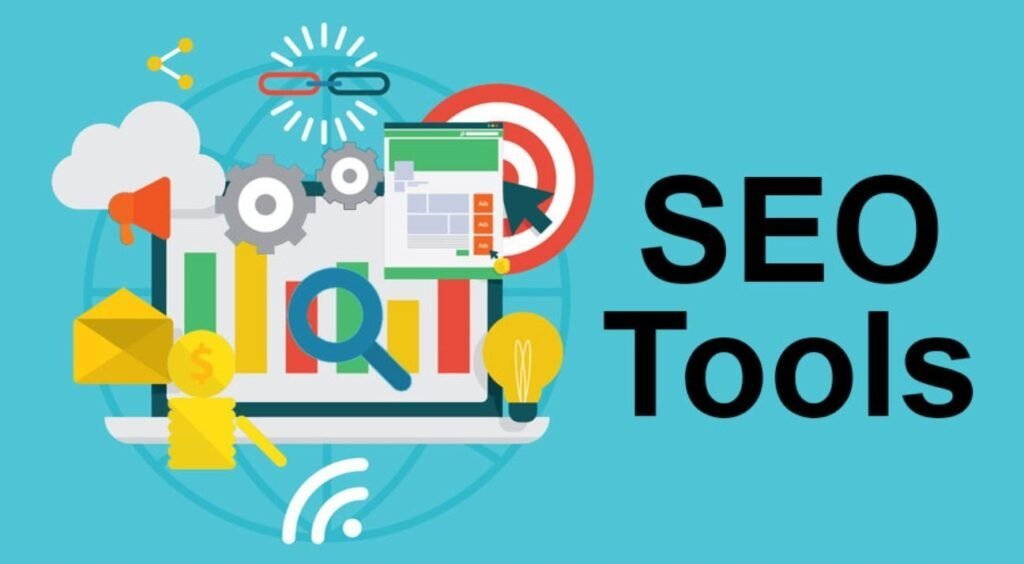
Link Building Tools
Ahrefs:
- Overview: Ahrefs is a comprehensive SEO toolset with a strong focus on backlink analysis.
- Key Features:
- Site Explorer: Analyze your backlink profile, discover new link-building opportunities, and monitor your competitors’ backlinks.
- Content Explorer: Find high-performing content in your niche to identify potential link targets.
- Rank Tracker: Monitor your keyword rankings and track progress over time.
- Benefits: Helps you understand your backlink landscape, find link-building opportunities, and keep an eye on your competitors.
SEMrush:
- Overview: SEMrush offers a wide range of SEO tools, including powerful backlink analysis capabilities.
- Key Features:
- Backlink Audit: Identify and disavow toxic backlinks to maintain a healthy link profile.
- Backlink Analytics: Analyze competitor backlinks, track new and lost links, and identify link-building opportunities.
- Domain Overview: Get a comprehensive overview of your domain’s backlink profile and its impact on SEO.
- Benefits: Provides detailed insights into your backlink profile and helps you stay competitive by tracking your competitors’ link-building activities.
Moz Link Explorer:
- Overview: Moz Link Explorer is a tool focused on link building and analysis.
- Key Features:
- Link Intersect: Identify websites that link to your competitors but not to you, revealing potential backlink opportunities.
- Domain Authority (DA) and Page Authority (PA): Metrics to gauge the overall strength of your domain and individual pages.
- Comprehensive Link Analysis: Get detailed information about your backlinks, including anchor text distribution and link quality.
- Benefits: Helps you track and improve your backlink profile, boosting your site’s authority and search rankings.
Social Media Management Tools
Hootsuite:
- Overview: Hootsuite is a social media management platform that helps you manage and analyze your social media efforts.
- Key Features:
- Scheduling and Publishing: Schedule posts across multiple social media platforms in advance.
- Social Listening: Monitor social media conversations to understand what people are saying about your brand.
- Analytics: Detailed insights into post performance, audience engagement, and social media ROI.
- Benefits: Streamlines social media management, allowing you to engage with your audience effectively and track social media performance.
Buffer:
- Overview: Buffer is another popular tool for managing social media accounts.
- Key Features:
- Post Scheduling: Schedule and publish posts across various social media platforms.
- Analytics: Track the performance of your social media posts, including engagement rates and reach.
- Team Collaboration: Allows multiple team members to collaborate on social media content.
- Benefits: Simplifies the process of sharing content across multiple social media platforms and provides insights into engagement metrics.
Sprout Social:
- Overview: Sprout Social offers robust social media management and analytics tools.
- Key Features:
- Social Media Scheduling: Plan and schedule posts across different platforms.
- Engagement Tracking: Monitor and respond to social media interactions in real-time.
- Detailed Reporting: Generate comprehensive reports on social media performance, audience demographics, and engagement metrics.
- Benefits: Enhances your ability to manage social media interactions and measure the impact of your social media strategies.
Review Management Tools
Trustpilot:
- Overview: Trustpilot is a popular review management platform.
- Key Features:
- Collecting Reviews: Easily collect and display customer reviews on your website.
- Responding to Reviews: Manage and respond to customer reviews from a single dashboard.
- Analytics: Gain insights into review trends and customer sentiment.
- Benefits: Builds trust with potential customers and enhances your site’s credibility and SEO.
Yotpo:
- Overview: Yotpo offers tools for collecting and leveraging customer reviews.
- Key Features:
- Review Collection: Automatically request reviews from customers after purchase.
- Visual Marketing: Use customer photos and videos in your marketing campaigns.
- Loyalty Programs: Implement loyalty programs to incentivize repeat purchases and reviews.
- Benefits: Improves customer engagement and boosts your off-page SEO with user-generated content.
ReviewTrackers:
- Overview: ReviewTrackers helps you manage and analyze customer reviews.
- Key Features:
- Review Monitoring: Monitor reviews from multiple review sites in one place.
- Sentiment Analysis: Analyze the sentiment of customer reviews to understand overall customer satisfaction.
- Reporting: Generate detailed reports on review performance and customer feedback.
- Benefits: Provides insights into customer feedback and helps you respond effectively to reviews, enhancing your online reputation.
Conclusion
Off-page SEO is a critical component of a successful eCommerce strategy. By focusing on building high-quality backlinks, engaging on social media, managing online reviews, and leveraging local SEO, you can significantly improve your search engine rankings, drive targeted traffic, and boost sales. Implementing these best practices will not only enhance your online visibility but also establish your brand as a trusted authority in your niche.
Recap of Key Points
- Understanding Off-Page SEO:
- Importance of off-page SEO in driving traffic and boosting eCommerce sales.
- Key strategies include building high-quality backlinks, leveraging social media, managing online reviews, and enhancing local SEO.
- Building High-Quality Backlinks:
- Focus on acquiring high-quality backlinks from reputable sites.
- Techniques include effective outreach, guest blogging, and broken link building.
- Leveraging Social Media:
- Use social media platforms to boost off-page SEO efforts and drive traffic.
- Create shareable content and engage with your audience to build a loyal community.
- Managing Online Reviews:
- Encourage positive customer reviews and respond promptly to all feedback.
- Use reviews to improve your products and services and enhance your local SEO.
- Enhancing Local SEO:
- Ensure consistent NAP information across local directories.
- Engage in local SEO activities to improve your visibility to local customers.
- Utilizing Forums and Communities:
- Participate in relevant discussions and share expertise in online communities.
- Build authority and drive traffic through thoughtful engagement.
- Measuring the Success of Off-Page SEO:
- Use tools like Google Analytics, Ahrefs, and SEMrush to track backlinks, social media engagement, and referral traffic.
- Monitor the effectiveness of your strategies and make data-driven adjustments.
- Common Off-Page SEO Mistakes to Avoid:
- Avoid focusing on quantity over quality, ignoring social media, neglecting online reviews, and not tracking results.
- Tools and Resources:
- Utilize tools like Ahrefs, SEMrush, Moz Link Explorer for link building; Hootsuite, Buffer, Sprout Social for social media management; Trustpilot, Yotpo, ReviewTrackers for review management.
Next Steps for Off-Page SEO Improvement
- Conduct a Backlink Audit:
- Use tools like Ahrefs or SEMrush to analyze your current backlink profile.
- Identify and disavow toxic links, and plan a strategy to acquire high-quality backlinks.
- Develop a Content Marketing Plan:
- Create valuable, shareable content such as blog posts, infographics, and videos.
- Promote your content through social media, guest blogging, and influencer outreach.
- Enhance Social Media Engagement:
- Schedule regular posts on social media platforms using tools like Hootsuite or Buffer.
- Engage with your audience through comments, shares, and direct messages.
- Optimize Local SEO:
- Ensure your business information is consistent across all local directories.
- Encourage local reviews and respond to customer feedback promptly.
- Monitor and Manage Reviews:
- Actively encourage satisfied customers to leave positive reviews.
- Use tools like Trustpilot or ReviewTrackers to monitor and respond to reviews.
- Participate in Online Communities:
- Join relevant forums and groups to share your expertise and build relationships.
- Provide valuable insights and link back to your eCommerce site where appropriate.
- Track and Analyze Performance:
- Regularly use Google Analytics, Google Search Console, and other SEO tools to track the effectiveness of your off-page SEO efforts.
- Adjust your strategies based on data-driven insights to continually improve your SEO performance.
By implementing these actionable steps and utilizing the recommended tools, you can enhance your off-page SEO, drive more traffic to your eCommerce site, and ultimately boost your sales.

